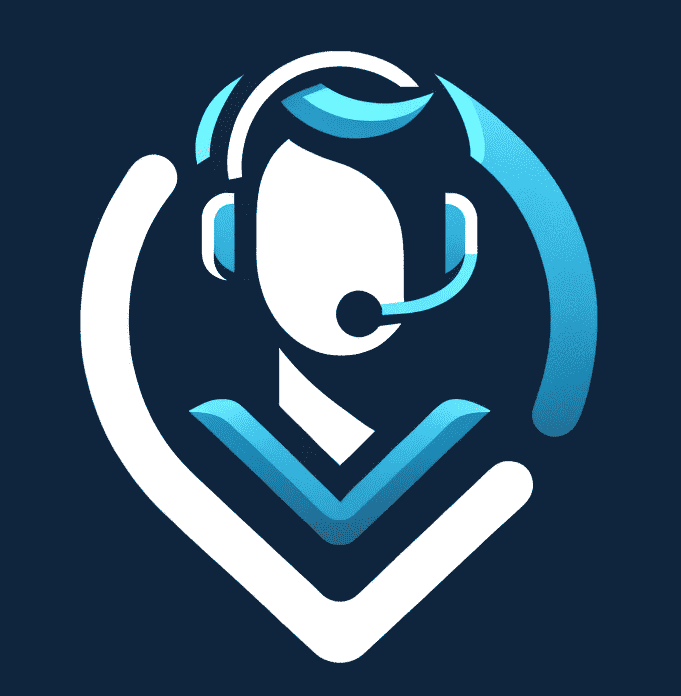Revolutionizing Business Success with Powerful CX Tools
Breaking into the realm of customer experience can seem like a daunting task, especially when you’re not familiar with CX tools.
Perusing through various online resources and forums, one might feel overwhelmed by the vast array of software options and strategies available.
“You can’t improve your customer experience without CX tools and you can’t leverage these tools without understanding them.” This is far from true. Many businesses are making significant strides in enhancing their customer journey even with minimal knowledge about these platforms.
The beauty of the modern business landscape lies in its constant evolution. With innovative startups launching cutting-edge CX solutions, traditional methods of managing client interactions are being disrupted, reducing dependency on old-school tactics.
The gap between companies that utilize CX tools effectively and those
Table of Contents:
- The Power of Customer Experience Tools in Business
- Choosing the Right Customer Experience System for Your Business
- Top-Rated Customer Experience Platforms for Success
- Harnessing Web Tracking and Analytics Tools for Enhanced CX
- Understanding the Role of Onboarding Tools in Enhancing CX
- Leveraging Customer Service Tools for Optimal Support
- Unleashing the Potential of Product Experience Insights on CX Strategy
- Navigating Different Stages of The Customer Lifecycle With CX Tools
- FAQs in Relation to Cx Tools
- Conclusion
The Power of Customer Experience Tools in Business
As we delve into the world of customer experience tools, commonly known as CX tools, their importance cannot be overstated. These software solutions offer a deep understanding of your customers’ behaviors and preferences that can drastically enhance satisfaction rates.
CX tools are game-changers for sales and marketing strategies.
A quote from Peter Drucker resonates here: “The aim of marketing is to know and understand the customer so well that the product or service fits them and sells itself.”
This philosophy encapsulates why companies invest heavily in these platforms. The better you comprehend your clients’ needs, wants, interactions with your brand – essentially their entire journey – the more likely they are to remain loyal to your business over time. This results not only in increased engagement but also boosts overall revenue growth.
Finding Your Perfect Match Amongst Various Platforms
Your choice among various CRM systems like Salesforce, monday CRM, Zoho, etc., should align closely with what best suits your specific requirements while considering factors such as scalability, ease-of-use, and integration capabilities, among others. A thorough evaluation will ensure maximum return on investment by delivering enhanced user experiences consistently across multiple touchpoints within any organization’s ecosystem.
Digging Deeper Into The Potential Of CX Tools:
These data-driven insights enable businesses not just to meet but exceed client expectations regularly, which directly contributes towards improved customer satisfaction levels.
Remember: Satisfied Customers = Successful Businesses.
In essence, harnessing this power can significantly transform an enterprise’s relationship with its clientele, leading us now into our next topic: Choosing an appropriate system that optimally leverages these benefits fully.
Choosing the Right Customer Experience System for Your Business
In your quest to improve customer experience, you’ve realized that a robust CX tool is not just an option but a necessity. How to decide on one that works for your business objectives?
The answer lies in strategic planning and evaluation.
A wise man once said, “By failing to prepare, you are preparing to fail.” This adage rings true when selecting a suitable customer experience system.
Your comfort level with the chosen platform, its ability to meet your specific needs, and enhance new user engagement will directly impact whether it aids or hinders achieving those desired high satisfaction rates.
Pick The Tool That Matches Your Goals
- Analyze what’s needed: Identify key areas of improvement – faster response times? better onboarding processes? Once these objectives are outlined, match them against potential systems’ capabilities.
- Evaluate features: Look at each prospective platform’s feature set closely. If swift responses matter most, opt for platforms known for their efficient ticketing mechanisms such as Salesforce Service Cloud.
Budget Considerations And More…
- Determine affordability: Budget plays an important role too. While some may lean towards premium solutions like Adobe Experience Manager, others might find more value-oriented options equally effective.
- User-friendliness matters: Ensure ease-of-use even for non-technical team members.
- Cross-platform compatibility counts: A good CX tool should work seamlessly across various devices, offering flexibility in accessing data anytime, anywhere.
- Data Analysis Capabilities can’t be ignored: Inbuilt analytical tools can help spot trends and patterns in customer behavior, leading us closer to making data-driven decisions.
All things considered, let’s move forward exploring top-rated platforms ruling this space today.
Top-Rated Customer Experience Platforms for Success
In the dynamic landscape of customer experience management, certain platforms have risen to prominence. These top-rated customer experience platforms are transforming businesses with their innovative features and proven track record.
Salesforce – A Leader in Customer Experience Management
Salesforce, a titan in this field, is renowned for its comprehensive suite that covers all facets of client interactions. Its powerful analytics capabilities coupled with advanced automation tools significantly enhance your capacity to deliver superior service.
The platform’s unique selling point lies in providing an integrated view across multiple channels, which allows you to tailor services according to each individual’s needs and preferences.
monday CRM – Streamlining Client Interactions Like Never Before
An equally potent contender is monday CRM, specializing in simplifying complex tasks related to managing client relationships while ensuring seamless team communication. SMEs seeking cost-effective alternatives without giving up on performance or usability can find monday CRM particularly advantageous.
Other noteworthy contenders include Adobe Experience Manager and HubSpot, among others, who share a commitment towards enhancing user satisfaction through cutting-edge CX strategies.
Let’s explore…
Harnessing Web Tracking and Analytics Tools for Enhanced CX
Web tracking and analytics tools are no longer optional in today’s digital age. They have become a necessity, providing businesses with critical insights into user behavior that enable them to enhance their customer experience.
The standout tool? Google Analytics.
A leading name in the industry, Google Analytics, equips you with features like Behavior Flow and Funnel Visualization. These give an unrivaled understanding of how users navigate your website or application.
Digging Deeper: How Google Analytics Enhances Customer Experience
Ever wondered about the path users take through your site? With Google Analytics’ Behavior Flow feature, this information is at your fingertips. It helps identify potential bottlenecks where customers may be experiencing difficulties or losing interest – enabling proactive measures to improve their journey.
In addition, its Funnel Visualization feature offers insight into conversion paths by highlighting stages where potential customers drop off before completing desired actions such as making a purchase or signing up for a newsletter.
Leveraging Other Web Tracking & Analytic Tools Beyond Google
Beyond just using Google Analytics, there are several other web tracking and analytic tools available, each offering unique capabilities tailored towards specific business needs. For instance, Crazy Egg specializes in scroll maps which indicate how far down people tend to scroll on pages.
All these collectively contribute towards enhancing customer experiences by providing actionable data regarding online user behavior. With this knowledge, businesses can make informed decisions about changes required on their platforms, thereby improving engagement rates.
Moving forward: Our next section will delve deeper into another pivotal aspect influencing customer experience – effective product/service onboarding using dedicated tools.
Understanding the Role of Onboarding Tools in Enhancing CX
In your journey to improve customer experience (CX), you’ve reached a critical stage – onboarding. This phase sets the foundation for all future interactions with your customers, making it essential to get right.
The need for effective onboarding tools cannot be overstated.
A wise individual once said, “An auspicious start yields a favorable conclusion.” The same maxim applies when introducing new customers to your product or service. A smooth and well-guided initiation can significantly enhance user engagement and satisfaction levels.
Better User Engagement Through Effective Onboarding
Why should businesses invest in quality onboarding tools? One reason is that they help reduce churn rates by preventing early abandonment due to confusion or frustration during initial use phases.
Furthermore, these resources allow businesses to effectively showcase their products’ features through interactive tutorials, walkthroughs, etc., thereby increasing overall usage as well as value perception among users.
Selecting an Appropriate Tool For Your Business Needs
Your choice of tool will depend upon various factors such as the complexity level of your product/service, ease-of-use requirements from the target audience’s perspective, customization needs based upon specific business goals, among others. Some platforms might offer step-by-step guides while others may provide video demonstrations or live chat support options. It’s crucial that you select one which aligns best with both your and customers’ expectations.
Consider aspects like integration possibilities with other systems being used within the organization, cost-effectiveness over the long term considering scale-up plans if any, etc.
After understanding how pivotal proper customer initiation is, let’s move onto another aspect equally important – providing excellent support throughout their journey.
Leveraging Customer Service Tools for Optimal Support
After exploring the importance of various CX tools in different stages of a customer’s lifecycle, it is crucial to delve into one key component – customer service tools. These are not just essential but also pivotal in retaining customers and resolving their issues effectively.
It’s time to look into how these tools operate.
The famous saying goes, “The customer is always right.” And when they have queries or concerns, providing prompt responses can significantly enhance overall satisfaction levels.
The Significance of Live Chat Software
In this digital era where immediacy rules supreme, live chat software has emerged as an indispensable part within the realm of customer service tools. This tool enables businesses to communicate with their clients instantly, thereby nurturing stronger relationships.
A Deep Dive Into Help Desk Systems
An efficient help desk system acts as a bridge between users and IT staff, enabling companies to address technical glitches more swiftly. Such systems ensure that every issue, from its inception till resolution, gets tracked so nothing slips through the cracks.
With insights on leveraging optimal support using numerous service instruments under our belt, let’s move forward by understanding how product experience data influences your overarching CX strategy.
Unleashing the Potential of Product Experience Insights on CX Strategy
In the present highly competitive atmosphere, comprehending how your patrons come into contact with your product is essential. With Mixpanel or Kissmetrics, you can gather these insights and use them to shape a robust customer experience (CX) strategy.
Leveraging User Interaction Data for Enhanced CX
“Power comes from knowledge,” as Sir Francis Bacon declared. By analyzing user interaction within your product, you can pinpoint potential roadblocks that may be preventing users from achieving their desired outcomes.
If certain features are rarely used or often abandoned midway by users, it could indicate usability issues that need addressing promptly to improve overall satisfaction levels.
Your products should always evolve in line with customer needs and expectations. Using feedback from analytics software helps refine existing functionalities while also guiding the development of new ones. This proactive approach significantly boosts satisfaction rates, thereby enhancing their overall experience.
A well-rounded CX strategy encompasses every touchpoint a customer has with your brand – including interactions with the product itself. Therefore, using this wealth of knowledge allows businesses to make informed decisions regarding future developments, marketing efforts, communication strategies, etc., all aimed at delivering superior experiences.
As we move forward in our discussion about different stages of the customer lifecycle where various categories cater specifically towards each stage, ensuring a seamless flow leading up to improved engagement, let us remember one thing: “A satisfied Customer Is The Best Business Strategy Of All” – Michael LeBoeuf.
Navigating Different Stages of The Customer Lifecycle With CX Tools
Understanding the customer lifecycle is akin to understanding the pulse of your business. It’s a voyage that starts with obtaining customers and concludes at keeping them, yet it doesn’t end there.
The process continues in cycles as you strive for improved user engagement through each phase.
A famous quote by Philip Kotler comes to mind: “The most important thing is to forecast where customers are moving, and be in front of them.”
This statement rings true when we consider how different stages require unique strategies – all made possible by leveraging various categories of CX tools.
The Acquisition Stage
In this stage, businesses use their marketing prowess to attract potential users or buyers. Think about using effective customer experience (CX) tools here – they can help monitor interactions with your campaigns and highlight successful approaches.
The Activation Stage
At activation, prospects transform into active users or purchasers. This transition hinges on making an excellent first impression which prompts further interaction with your product or service. Customer engagement platforms come into play during this phase facilitating smooth communication channels between businesses and new clients.
The Retention Phase
Moving onto retention, keeping existing customers satisfied so they continue patronizing becomes paramount. Regularly monitoring feedback via robust software helps understand their needs better while also enabling swift issue resolution.
Expansion- More Than Just Growth
In expansion, the aim shifts towards increasing sales from current consumers either through upselling opportunities or cross-selling additional products/services. Achieving success at this juncture requires gaining insights about client preferences guiding apt strategies.
While each stage presents its own set challenges, knowing how these phases interconnect allows crafting more efficient overall consumer experiences. Leveraging appropriate CX instruments throughout ensures seamless navigation leading towards enhanced user involvement across every step.
Understanding your customer’s lifecycle is like taking the pulse of your business. With CX tools, you can forecast where customers are headed and meet them there, tailoring strategies for each stage – acquisition, activation, retention, and expansion. It’s all about enhancing user engagement at every turn.
FAQs in Relation to Cx Tools
What is a CX tool?
A CX (Customer Experience) tool is software that helps businesses enhance their interactions with customers, providing valuable insights into customer behavior and preferences.
What does CX stand for?
CX stands for Customer Experience. It represents the perception customers have about a company based on their interactions throughout the buying journey.
Who owns CX in a company?
The ownership of CX typically lies with top management or dedicated teams like customer success or experience managers within an organization.
What does a CX strategy stand for?
A CX strategy outlines how a business plans to deliver positive experiences across all touchpoints to meet or exceed customer expectations, thereby fostering loyalty and growth.
Conclusion
The power of CX tools in transforming businesses is undeniable. They are the game-changers in improving customer satisfaction rates.
Choosing the right system requires aligning your business goals with platform features, a task that demands careful consideration.
Top-rated platforms like Salesforce and monday CRM are revolutionizing how we manage customer experiences, setting new standards for success.
Web tracking and analytics tools give us insights into user behavior, helping to optimize their experience. Onboarding tools guide customers through initial product interactions smoothly.
Customer service tools offer invaluable support while product experience insights shape our overall strategy. Each stage of the customer lifecycle can be navigated seamlessly using these powerful resources.
If you’re ready to harness this potential and drive growth for your business, consider exploring my blog at ChrisVassiliou.com. With over 35 years of customer service experience under my belt, I share insightful tips on leveraging CX tools effectively. Dive deep into strategies that will not only enhance your customers’ journey but also generate more leads for your business!



